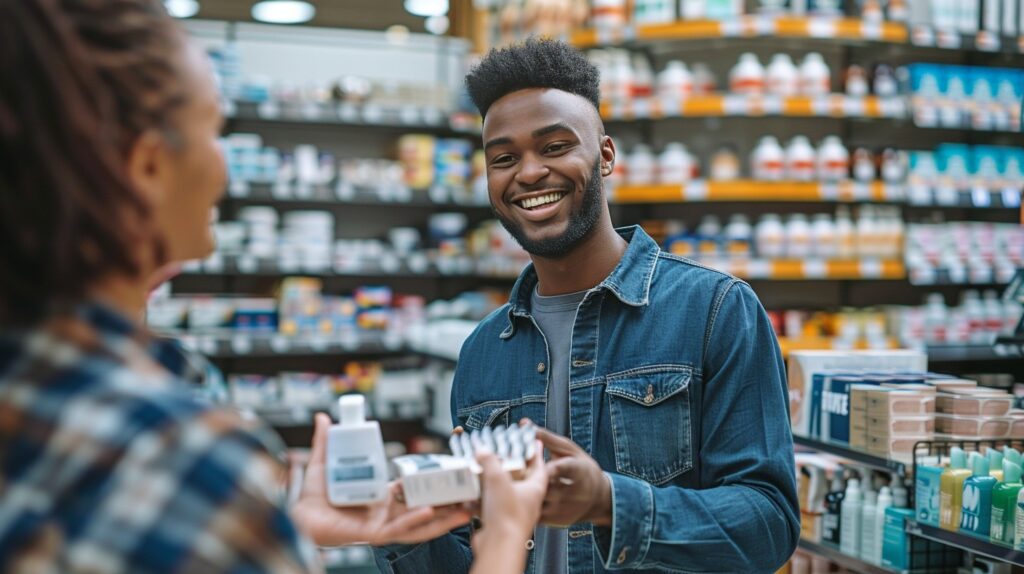
In today’s competitive marketplace, capturing customers at key points in their purchase journey is crucial to driving conversions. Whether through e-commerce, in-store experiences, or customer marketing, businesses need to provide a seamless buyer journey that guides customers from discovery to purchase. In this post, we will explore strategies for enhancing the buyer journey at critical moments, ensuring a smooth and engaging experience that leads to conversions.
1. Understanding the Buyer Journey
The buyer journey is the path that a customer takes from initial awareness of a product or service to the point of purchase. This journey typically consists of several stages:
- Awareness: The customer becomes aware of a product or service.
- Consideration: The customer evaluates the product or service and compares options.
- Decision: The customer makes a purchase decision.
To drive conversions, businesses must optimize each stage of the buyer journey by providing the right information, incentives, and experiences that move customers closer to making a purchase.
2. Capturing Customers in E-Commerce
In the world of e-commerce, capturing customers at key moments can be the difference between a completed transaction and an abandoned cart. Here are strategies to enhance the buyer journey in e-commerce:
a) Optimized Website and Mobile Experience
A seamless website and mobile shopping experience are essential. Ensure that your site loads quickly, is easy to navigate, and offers intuitive product search and filtering options. Providing detailed product descriptions, customer reviews, and high-quality images can help customers make informed decisions.
Example: Amazon’s Streamlined Checkout Process
Amazon’s one-click checkout and personalized recommendations make it easy for customers to move from product discovery to purchase, reducing friction in the buying process.
Actionable Tip: Implement a streamlined checkout process with fewer steps and offer payment options like PayPal or Apple Pay for faster transactions.
b) Personalized Recommendations
Personalization plays a significant role in capturing customers at crucial moments. Use data-driven insights to recommend products that match the customer’s preferences or previous purchase history.
Example: Netflix’s Personalized Suggestions
Netflix excels at recommending content based on user preferences, keeping users engaged and coming back. Similarly, offering personalized product recommendations based on browsing behavior can increase conversion rates.
Actionable Tip: Use AI and machine learning to recommend products tailored to each customer’s interests, increasing the chances of conversion.
c) Cart Abandonment Emails
A high percentage of online shoppers abandon their carts before completing a purchase. By sending timely cart abandonment emails with a reminder or discount, you can recover lost sales.
Example: Asos’s Cart Recovery Strategy
Asos sends personalized emails reminding customers of items left in their cart, often paired with a small discount to incentivize completion of the purchase.
Actionable Tip: Set up automated cart abandonment emails to remind customers of items they’ve left behind, and consider offering a limited-time discount to encourage them to complete their purchase.
3. Enhancing In-Store Experiences
Even in the digital age, in-store experiences still play a pivotal role in capturing customers at key points of their journey. Retailers need to provide personalized, convenient, and engaging experiences to convert foot traffic into purchases.
a) In-Store Personalization
Just as with e-commerce, personalization is key to enhancing the in-store experience. Use customer data and loyalty programs to provide personalized product recommendations or exclusive offers when they shop in-store.
Example: Sephora’s In-Store Personalization
Sephora’s loyalty program integrates with their mobile app, offering personalized recommendations and discounts in-store, improving the customer’s shopping experience.
Actionable Tip: Equip store associates with customer data to offer personalized product suggestions or discounts based on a customer’s shopping history or preferences.
b) Omnichannel Integration
Omnichannel shopping experiences allow customers to seamlessly move between online and offline channels. Retailers that provide services like buy online, pick up in-store (BOPIS) or in-store returns for online purchases offer added convenience and increase the likelihood of conversions.
Example: Target’s BOPIS Model
Target’s BOPIS option allows customers to purchase products online and pick them up in-store, offering a seamless transition between digital and physical channels.
Actionable Tip: Implement omnichannel features like BOPIS or curbside pickup to meet the demands of modern consumers who want convenience and flexibility.
c) Interactive Product Displays
Interactive displays or in-store technology like augmented reality (AR) can capture customer interest and encourage engagement with products. This creates a more immersive experience and drives impulse purchases.
Example: IKEA’s AR App
IKEA’s AR app allows customers to visualize how furniture will look in their homes before purchasing, bridging the gap between physical and digital shopping experiences.
Actionable Tip: Use interactive displays or AR to allow customers to visualize or experience products before purchasing, increasing engagement and conversions.
4. Customer Marketing to Drive Conversions
Customer marketing focuses on delivering personalized experiences through communication channels like email, social media, and loyalty programs. It plays a crucial role in nurturing customers along the buyer journey and driving conversions.
a) Loyalty Programs
Loyalty programs reward repeat customers and incentivize them to make additional purchases. By offering exclusive deals, early access to new products, or personalized rewards, businesses can foster customer loyalty and encourage repeat sales.
Example: Starbucks Rewards Program
Starbucks’ loyalty program allows customers to earn points for every purchase, which they can redeem for free drinks or food. This has created a loyal customer base and incentivized frequent purchases.
Actionable Tip: Develop a loyalty program that rewards customers for repeat purchases, offering personalized rewards or exclusive deals to keep them engaged.
b) Targeted Email Campaigns
Email marketing is one of the most effective ways to reach customers at critical points in the buyer journey. By segmenting your audience and sending personalized offers or product recommendations, you can encourage customers to complete purchases.
Example: Nike’s Personalized Emails
Nike sends personalized email campaigns that recommend products based on past purchases or browsing behavior. These emails often include limited-time offers or product updates to drive conversions.
Actionable Tip: Use email marketing tools to segment your audience based on behavior or preferences, and send targeted messages that encourage conversions, such as exclusive discounts or product recommendations.
c) Social Proof and Reviews
Customer reviews and testimonials provide social proof that can encourage potential buyers to convert. Featuring positive reviews on product pages or sharing user-generated content on social media can build trust and influence purchase decisions.
Example: Glossier’s Use of User-Generated Content
Glossier encourages customers to share their experiences with products on social media, often reposting these reviews to create trust and transparency with potential buyers.
Actionable Tip: Highlight customer reviews and testimonials on product pages and share user-generated content on social media to build trust and drive conversions.
Conclusion
Capturing customers at key points in their purchase journey is essential for driving conversions, whether through personalized e-commerce experiences, engaging in-store interactions, or targeted customer marketing. By focusing on seamless transitions, personalization, and strategic communication, businesses can guide customers smoothly through their journey and turn interest into sales.
At Brina Solutions, we help businesses optimize every stage of the buyer journey to ensure seamless transitions that lead to conversions. Whether you’re looking to enhance your e-commerce platform, improve in-store experiences, or drive engagement through customer marketing, our team is here to support you. Contact us today to learn how we can help boost your sales and customer satisfaction!







Leave a Reply